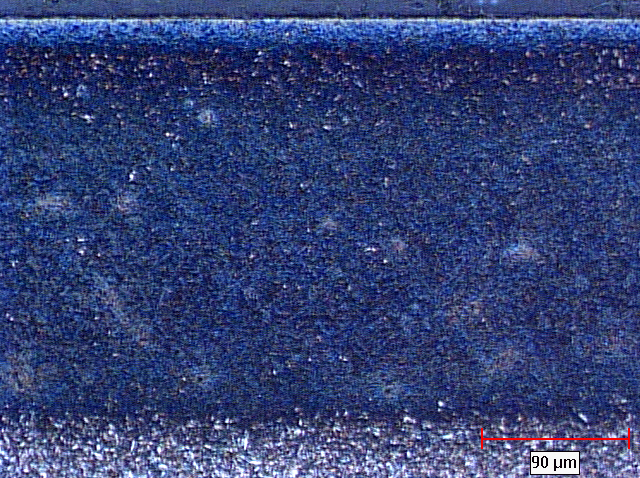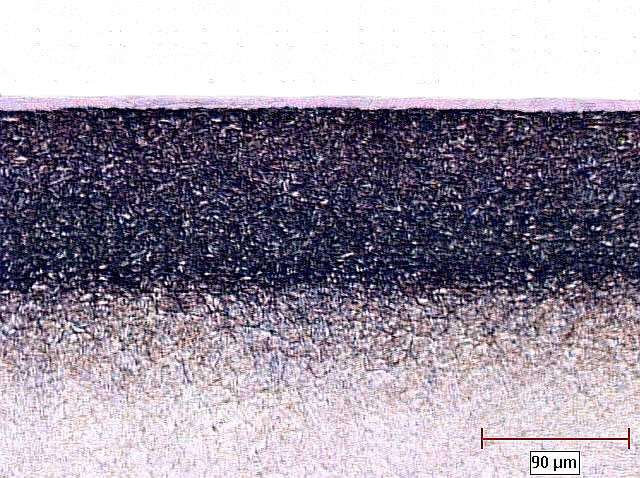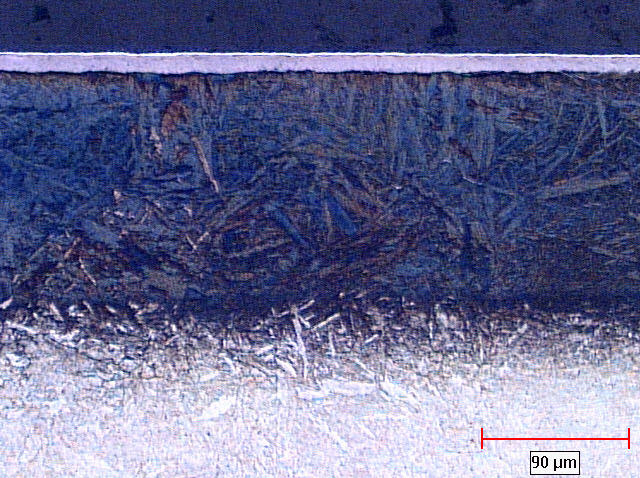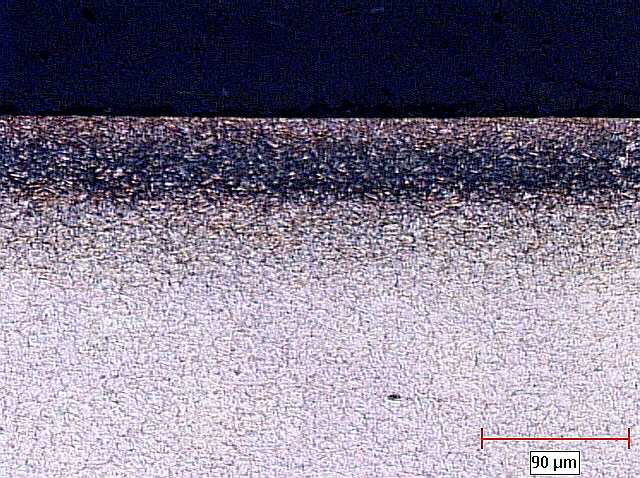What is nitriding?
Before a specific explanation of Nitreg® can be effectively presented, as well as for the sake of completeness, we will describe nitriding in general. Then we will proceed to describe our “potential-control” group of technologies.
Nitriding is a process of diffusing nitrogen atoms into the metal's surface. Nitrogen is plentiful on Earth, however, in nature it exists as a two-atom molecule, chemically inert and too large to penetrate the surface. Hence nitriding technologies focus on the source of nascent (atomic) nitrogen.
Regardless of the method, nitriding is a process of diffusing nitrogen into the metal and such diffusion, once individual atoms of nitrogen have penetrated the surface, continues as long as the temperature is high enough, and there is a fresh supply of nascent nitrogen on the surface. In other words, the diffusion is basically the same in all nitriding, while the difference lies in the supply of nitrogen. The latter has a fundamental influence on the resultant properties of the surface.
Traditional Nitriding Methods
The three traditional nitriding methods practiced on an industrial scale are:
(a) salt bath (liquid) nitriding, where the source of nitrogen (and also carbon) is molten salt,
(b) gas nitriding which uses ammonia (NH3), and
(c) plasma nitriding where molecular nitrogen (N2) is split into ions in an electromagnetic field.
Salt baths are not used by Nitrex due to that method's environmental dangers and our concern for personal safety of the operators. Besides, the process has few advantages, quick heating of the workpiece being the only one worth mentioning. Therefore the process shall not be described any further.
Plasma nitriding is used by Nitrex for selected applications and the process is described as a separate paragraph in the “Technology” section.
Nascent nitrogen is obtained from ammonia in gas nitriding. The conventional version of the process relies on the measurement of the dissociation rate of ammonia into its constituent gases - nitrogen and hydrogen. A simple device called a buret (or more properly burette) is employed for periodically checking the dissociation rate and an adjustment to the flow of ammonia is made as required, usually in a manual fashion.
Materials
Generally speaking all ferrous alloys, including stainless steels, cast irons, and even titanium alloys, are capable of being nitrided. However, the various alloys have different characteristics with regard to surface conditions, the natural speed of diffusion and propensity to form nitrides. It is important to understand that even a properly run nitriding process will produce significantly different results on dissimilar materials. Consequently, some users may have insurmountable difficulties, particularly if their methodology is primitive and/or their knowledge and experience inadequate.
Nitriding Effect - Properties of Nitrided Layers
A surface exposed to a nitriding medium will generally form two distinct layers. The outside layer is called a compound layer (or white layer) and its thickness generally falls between zero and 0.001” (25 ၭm). Underneath the white layer we have a diffusion case or diffusion zone. Both together comprise what is generally referred to as the case. However, as mentioned earlier, depending on the material and its original pre-process hardness there will be very significant differences between the properties of these layers. A full description of these phenomena is well outside the scope of this website. We encourage our visitors to contact us if specific such information is required. Meanwhile we will concentrate our attention on explaining the “why and how” of controlling the properties of the nitrided surface, particularly with regard to the compound layer.
Control
The images of two Vickers hardness tester indentations shown below illustrate the difference between a controlled and uncontrolled process. The specimen on the left was produced in a traditional process and the cracking of the surface is indicative of the brittleness of the layer. The one on the right is a product of a Nitreg® process where, in spite of the same hardness, cracks have not formed. The Nitreg® treated component is therefore more resilient with high toughness of the compound layer.
Such superior result can only be achieved by controlling the nitrogen concentration in the substrate and the modern approach is control of nitriding potential (Kn). Proper understanding and application of the principles that tie nitriding potential (Kn), temperature and time are the cornerstone of the Nitreg® technology. An example of our ability to produce a variety of white layer / diffusion case combinations is shown in the following chart:




Diffusion Case
White Layer
Kn
55µm DC
0µm WL
115µm DC
8µm WL
65µm DC
0µm WL
170µm DC
13µm WL
H13 Tool Steel
265µm DC
0µm WL
FIGURE 1: NITRIDED CASE COMBINATIONS PRODUCED WITH NITREG® ON ALLOY STEEL
Wyszukiwarka
Podobne podstrony:
43 597 609 Comparison of Thermal Fatique Behaviour of Plasma Nitriding
LIQUID NITRIDING
76 1075 1088 The Effect of a Nitride Layer on the Texturability of Steels for Plastic Moulds
42 577 595 Optimized Heat Treatment and Nitriding Parametres for a New Hot Work Steel
gas nitriding table
Nitriding Windsor S B
67 961 977 Investigating Tribochemical Behaviour of Nitrided Die Casting Die Surfaces
Corrosion behavior of titanium nitride
więcej podobnych podstron